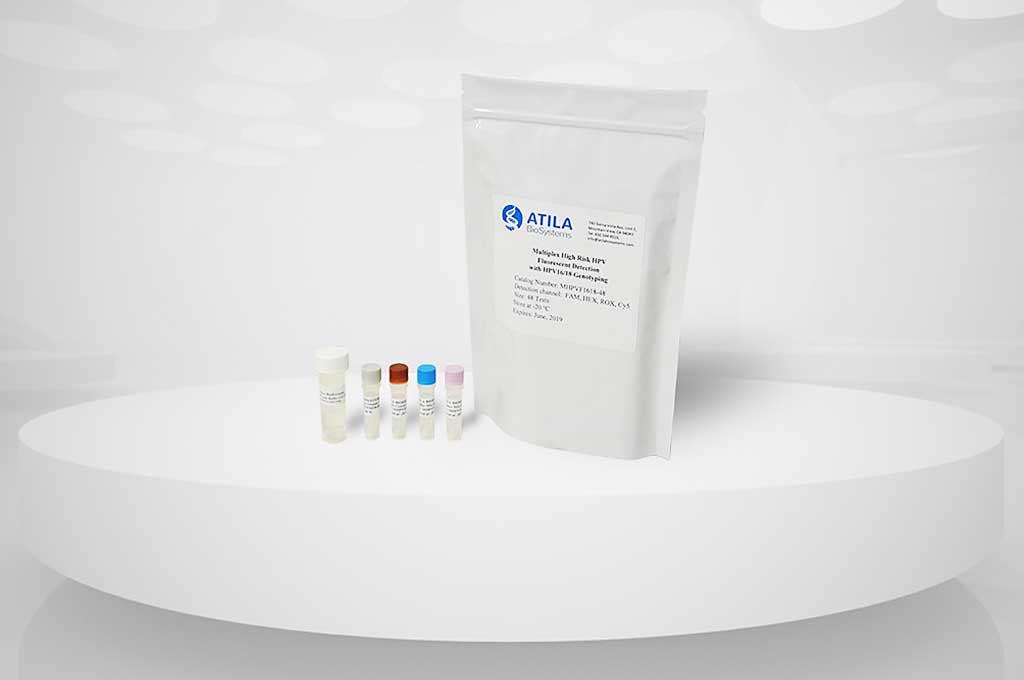High-Throughput Isothermal HPV Test Validated
By LabMedica International staff writers
Posted on 10 Mar 2020
Human papillomavirus (HPV) is a viral infection that is passed between people through skin-to-skin contact. There are over 100 varieties of HPV, more than 40 of which are passed through sexual contact and can affect the genitals, mouth, or throat.Posted on 10 Mar 2020
Some types of HPV are considered high risk because they can cause cancer. HPV testing detects the genetic material (DNA or messenger RNA) of high-risk HPV (hrHPV), primarily to screen for cervical cancer or to determine whether there is a risk of cervical cancer.

Image: The AmpFire Multiplex Human papillomavirus (HPV) assay for real time fluorescent detection (Photo courtesy of AtilaBiosystems).
A large team of international scientists led by the Memorial Sloan Kettering Cancer Center (New York, NY, USA) performed an analytic validation of the AmpFire Multiplex HPV assays (AtilaBiosystems, Mountain View, CA, USA) on formalin-fixed, paraffin-embedded (FFPE) cervix/vulva and oropharynx diagnostic tissue samples. The AmpFire assay incorporates a novel isothermal multiplex amplification coupled with real-time fluorescent detection to detect and genotype 15 high-risk (HR) HPV genotypes.
The performance of the AmpFire assays in clinical samples was evaluated using 214 FFPE specimens. The international team also evaluated the Atila AmpFire HPV test comparing it to gold-standard testing, the Roche Cobas HPV and LinearArray tests (Risch-Rotkreuz, Switzerland). The team reported that the limits of detection determined by plasmids cloned with HPV genotype-specific sequences were two copies/reaction for HPV16, HPV18, and some HR HPV genotypes, and 20 copies/reaction for the remaining HR HPV genotypes.
The AmpFire assay failed in one clinical specimen for an invalid rate of 0.5%. The AmpFire assay detected HPV in clinical samples with positive percent agreements of 100% for HPV16, 100% for HPV18, and 94.7% for non-16/18 HR HPV, and 100% negative percent agreements for HPV16, HPV18, and non-16/18 HR HPV. Importantly, 53 of the FFPE clinical samples were biopsies of the oropharynx. In the USA, 70% of oropharyngeal cancers are HPV-related and fresh and preserved biopsy samples are frequently tested for HPV.
The authors concluded that qualitative detection agreement was obtained in their reproducibility study. In summary, the Atila AmpFire HPV assay demonstrated excellent analytic sensitivity and specificity for detection and genotyping of 15 HR HPV genotypes. Assay parameters of simple specimen processing, small sample size requirement, rapid turnaround time, and being near instrument-free render it well suited for HPV detection and genotyping in FFPE specimens. The study was published on January 21, 2020 in the Journal of Molecular Diagnostics
Related Links:
Memorial Sloan Kettering Cancer Center
AtilaBiosystems
Roche














